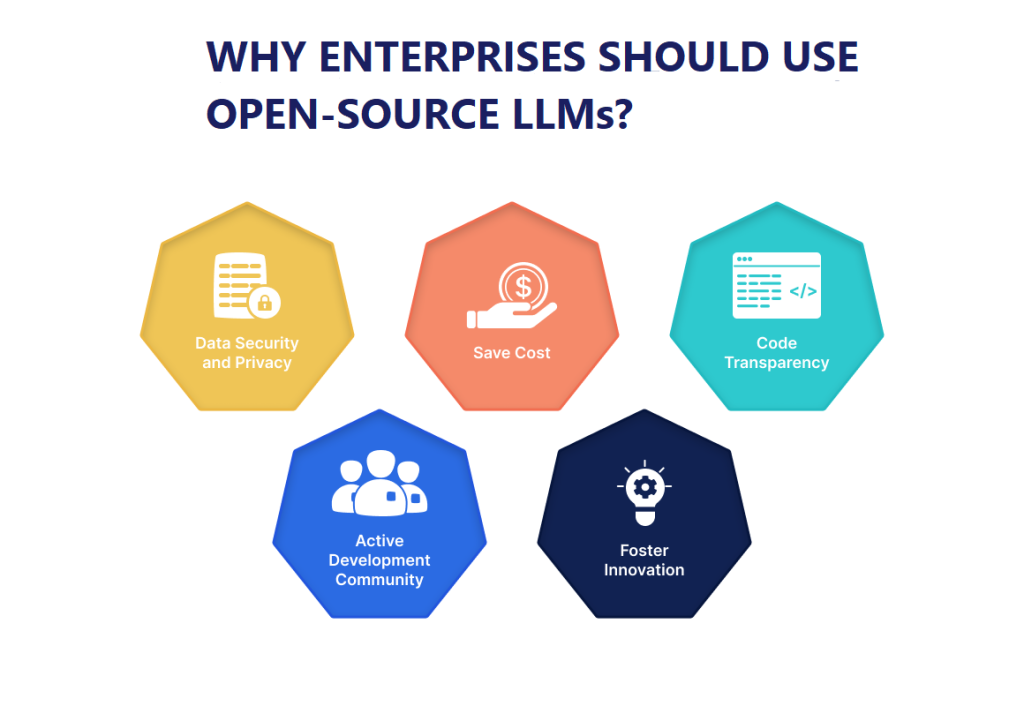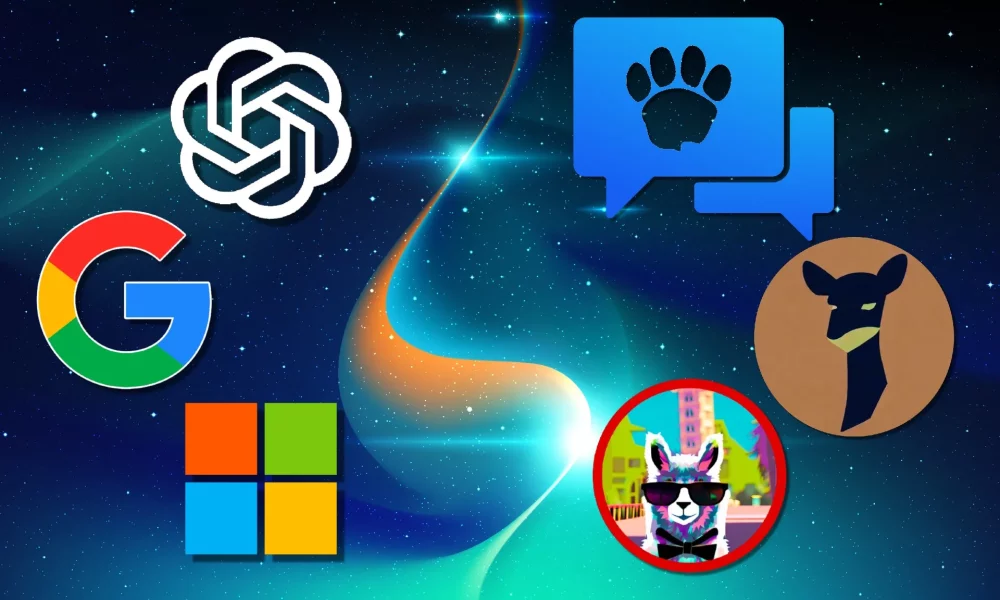Large language models (LLMs) are a type of artificial intelligence (AI) that can generate text, translate languages, write different kinds of creative content, and answer your questions in an informative way. They are trained on massive datasets of text and code, and can be used for a variety of applications, such as customer service, content generation, and research.
When it comes to implementing LLMs for internal AI projects, one important decision to make is whether to use open or closed source LLMs. Open source LLMs are freely available and can be modified and redistributed by anyone. Closed source LLMs are proprietary and their source code is not publicly available.

Benefits of Open Source LLMs
- Control: With open source LLMs, you have complete control over the model, its training data, and its applications. This means that you can customize the model to meet your specific needs and ensure that it is used in a responsible way.
- Customization: Open source LLMs are also easier to customize than closed source LLMs. This is because the underlying architecture and weights of open source LLMs are publicly available, so you can make changes to the model as needed.
- Community support: Open source LLMs are often supported by a large community of developers who are constantly working to improve the models. This means that you can get help and support from the community if you need it.
- Innovation: The open source community is known for its innovation, and open source LLMs are no exception. This means that you can be sure that the models are constantly being updated with new features and capabilities.
- Transparency: Open source LLMs are fully transparent, so you can see how the model works and what data it was trained on. This can help you build trust with your customers and stakeholders.
Disadvantages of Open Source LLMs
- Limited resources: Open source projects may have limited resources compared to closed source projects backed by large corporations. This can mean that the models may not be as well-developed or as accurate as closed source models.
- Dependency on community: The development and improvement of open source LLMs depend on the contributions of the community. This means that the models may not be as stable or reliable as closed source models.
ALSO READ: 11 ways you can use ChatGPT to write code
Benefits of Closed Source LLMs
- Resources: Closed source LLMs are often backed by large corporations with significant resources for development and improvement. This means that the models are typically more well-developed and accurate than open source models.
- Support: Closed source LLMs may come with dedicated support from the company that developed them. This can be helpful if you need help using or troubleshooting the model.
Disadvantages of Closed Source LLMs
- Limited control: With closed source LLMs, you have limited control over the model, its training data, and its applications. This means that you cannot customize the model to meet your specific needs or ensure that it is used in a responsible way.
- Limited customization: The underlying architecture and weights of closed source LLMs are not publicly available, so you cannot customize the model as needed.
- Lack of transparency: Closed source LLMs are not transparent, so you cannot see how the model works or what data it was trained on. This can make it difficult to build trust with your customers and stakeholders.
Which is Right for You?
The decision of whether to use open or closed source LLMs depends on your specific needs and priorities. If you need a model that you can customize and control, then an open source LLM may be a good option. If you need a model that is well-developed and accurate, then a closed source LLM may be a better choice.
Ultimately, the best way to decide is to carefully consider the benefits and disadvantages of both options.
Here are some additional factors to consider when making your decision:
- The size and complexity of your project
- The budget you have available
- The level of expertise you have in AI
- The regulatory requirements that apply to your project



0 responses to “Open Source LLMs vs. Closed Source LLMs: Which is Right for You?”